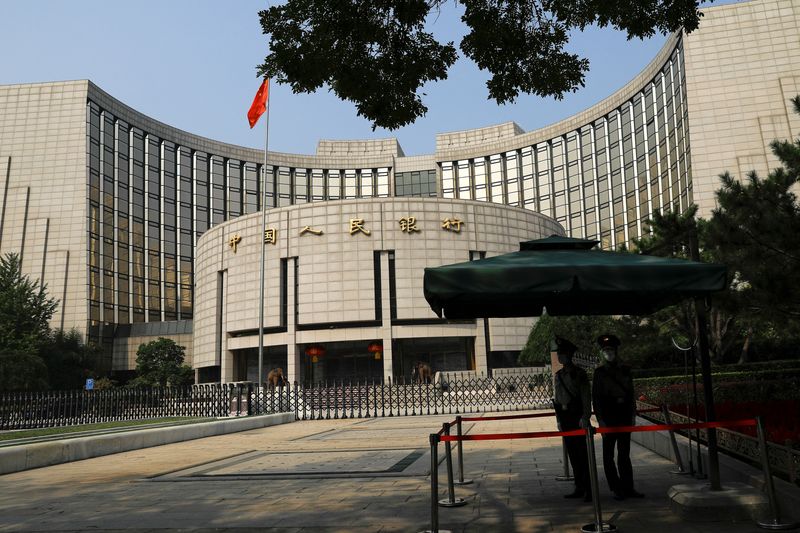
©Reuters. File photo: Paramilitary police officers stand guard outside the headquarters of the People’s Bank of China, the central bank (PBOC), in Beijing, China, September 30, 2022. REUTERS/Tingshu Wang/File Photo
SHANGHAI/SINGAPORE (Reuters) – China left its monthly benchmark lending rates unchanged on Wednesday, in line with market expectations, after the central bank kept the benchmark rate stable last week amid signs of improvement in the overall economy.
BECAUSE IT IS IMPORTANT
China has set an economic growth target of “around 5%” for 2024, a rate that economists say is ambitious and requires more stimulus, including monetary and fiscal easing.
In particular, China needs to revive a battered real estate sector. Most new and outstanding loans in China are based on the one-year prime loan rate (LPR), while the five-year rate influences the price of mortgages.
But any drastic interest rate cuts could put pressure on the yuan and banks whose net interest margins (NIM) have been declining since last year.
IN NUMBERS
The one-year prime loan rate (LPR) was held at 3.45%, while the five-year LPR remained unchanged at 3.95%.
In a Reuters poll of 27 market watchers conducted this week, all respondents expected both rates to remain unchanged.
While China’s industrial production and retail sales beat expectations in January-February, real estate investment in China fell 9% year-on-year in the first two months of 2024, following a sharp 24% decline in December. Real estate sales are also down.
Credit growth has also slowed. Outstanding yuan loans grew 10.1% in February from a year earlier, the lowest level on record.
CONTEXT
Last week, China’s central bank left its medium-term lending (MLF) rate unchanged. The MLF rate serves as a guide to LPR, which is set by 20 designated commercial banks.
But PBOC Governor Pan Gongsheng said earlier this month that the bank will keep the yuan broadly stable and sent a dovish message to the market that China has “rich monetary policy tools at its disposal.”
Investors have since stepped up bets that authorities will take further monetary easing measures, including a further reduction in bank reserves, to support the economy.